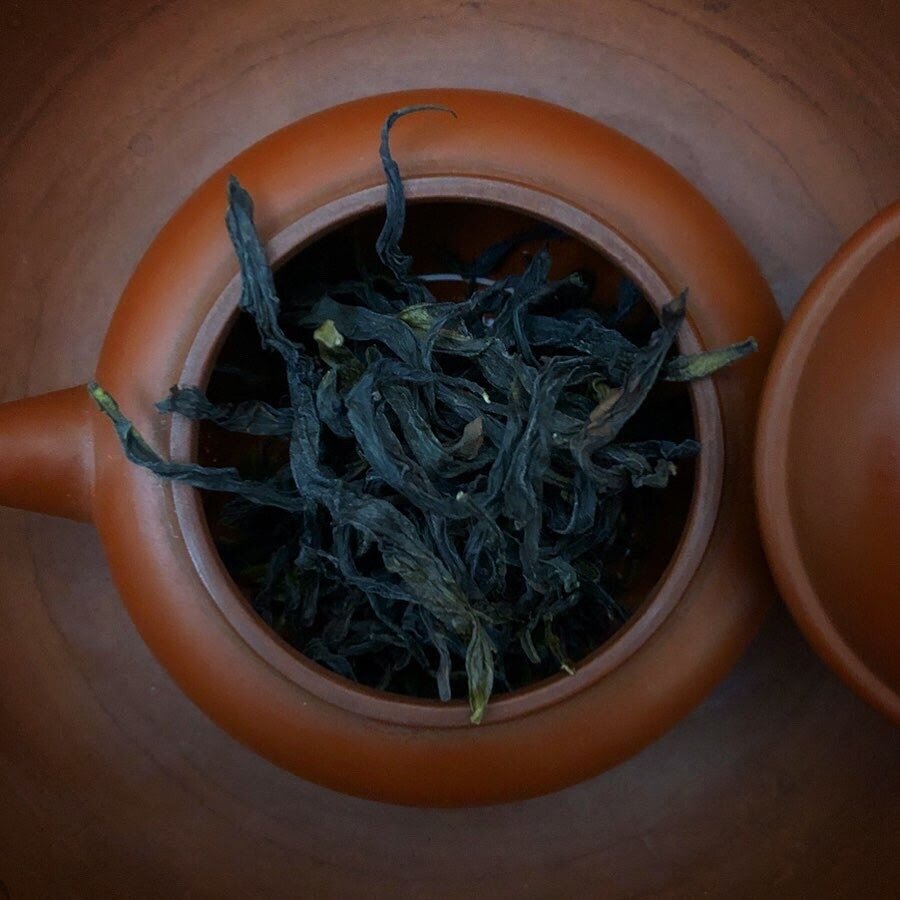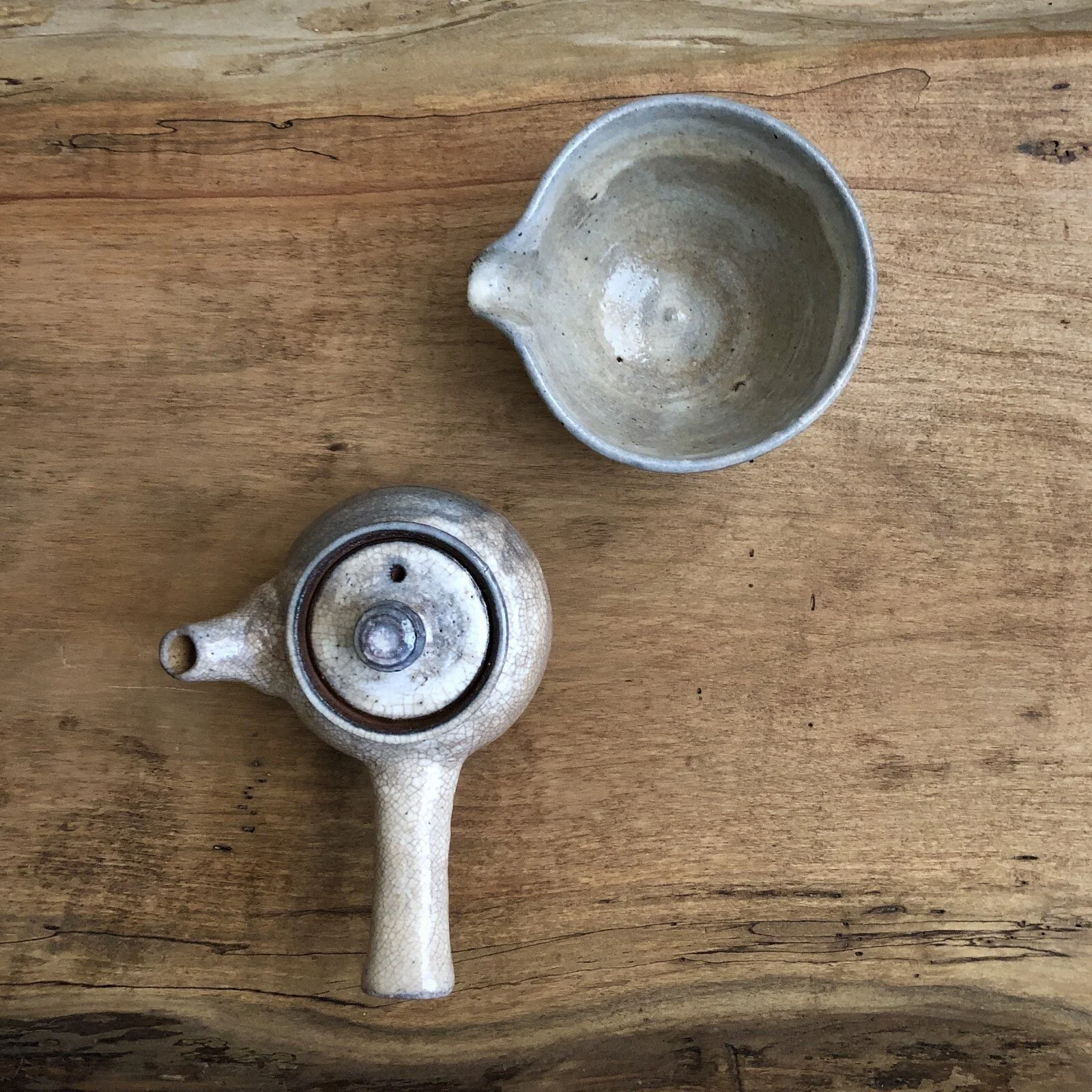Tea - The Taste of Meditation
by Scott Norton
Scott is a writer, researcher and practitioner of tea traditions, including chanoyu, gōng fū chá and the Korean Way of Tea. He has worked in the tea industry for the past two decades, sourcing tea, leading public events, and developing tea education.
There is an old saying that is shared in both tea and Zen circles: 茶禪一味, “Tea and Zen, One Taste”. Unpacking this phrase can lead one into a number of directions. 茶, cha, or Camellia sinensis, is a small evergreen shrub that, when consumed (steeped, whisked, boiled, eaten, or otherwise), can have a stimulating effect, creating alertness and an awakened state. 禪, Zen (Chán in Mandarin, ध्यान dhyāna in Sanskrit), is a meditative state, specifically describing a form of self-observation that can bring about awakening (i.e. “enlightenment”).
At this point, I do not want to force the idea of tea and meditation. Instead, I want to invoke the notion that
tea can become a meditation.
Indeed anything, if done mindfully, can become a meditation.
I am often asked when I prepare tea for others, how do I make tea a meditation. What are the “steps”? Is it a “ritual”? These questions suppose that there is a structure to this. True, one must boil water, perhaps select wares, and brew tea. Beyond this, however, the “steps” or “ritual” are just extra.
Ask yourself this: When you walk to the subway, do you add extra steps? If so, what do you do? If not, what is that like? Granted, many of us do not put much thought into this most mundane act. In fact, many of us prefer not to think of this at all. Yet, perhaps this is what tea is too. Consider making tea like the walk to the subway. If you do not mindfully make tea, you may over-steep the leaves. You may forget to serve a guest. You may not even appreciate their company or the moment itself. What would that feel like?
So often, we do many of the day-to-day actions as an automatic action. That walk to the subway. The elevator ride or climbing of stairs up to your apartment. The tossing away of a piece of refuse. The making of a meal. Eating. Getting dressed. Brushing our teeth. We might do these so often and so automatically that we might even forget that we are doing them as we are doing them. What does that feel like?
Now, when we make tea, we might feel a bit different. Try this. Fill the kettle with water and set it to boil. During this moment, as the water is climbing in temperature, from cold to hot to boiling, determine what tea you want to make. Think of who you will be brewing it for. Yourself? A friend? A family member? A complete stranger? Now, pair the teaware to brew this tea to the tea itself. What will brew it the very best, or at least adequately?
As you set up the tea space, arrange it in a way that makes sense to the action at hand. As you would naturally walk from your home to the subway station, or to work, or to the market, try to set up the space that allows for the most fluid movement, without any “extra steps”. Note, that if you’ve never approached tea like this before, this may not come naturally. Don’t worry. Everything done for the first time seems infinite in possibilities and potential pitfalls. Don’t worry (if you can, that’s good, if not, that’s ok too).
As the water comes to a boil and you’ve set up your tea space, big or small, simple or complex, bring the water and tea, cups and people together and make tea. Breathe outward as you reach outward. Breathe inward as you bring objects towards you. If you breathe naturally, at a consistent cadence, you will find this will help to calm the mind and any anxieties you might have. You will find that this will remind you of what you are doing. This will help to bring you into this moment.
The more you do this, the more natural this may become. It may take a single sitting, it may take a thousand. In chanoyu, we say “one makes a hundred bowls of tea before they make one bowl of tea”. Everything takes practice. Everything requires a certain level of repetition before reaching mastery. Alas, there is another saying, “make every bowl of tea as if it were the one bowl of tea”. Treat the multitude of occurrences as if they are the one moment. Keeping this in mind, and not using these notions as some sort of judgement against what you are doing, just make that bowl of tea, or brew that pot of tea. Serve that cup (whether it is a high mountain oolong, a shade-grown gyokuro, a spicy chai, or foamy bittersweet cup of mint tea). It is, after all, just a cup of tea.
So where does this leave us? Somewhere between the stepping-off point of our journey and somewhere far from the top of the mountain it seems. We began with the most perplexing of 公案 kōan, 茶禪一味, “Tea and Zen, One Taste”, and we’ve ended with a sort of “anything goes” approach to making tea. What to make of this? What’s the trick? Alas, there is none. When we approach something complex such as the philosophical ramifications of meditation and something as simple as tea, we see that both, in actuality, are equally complex and equally simple. The common thread is, however, the action and practice that is needed to meditate, the action and practice that is needed to make tea.
Meditation, whether walking, sitting, standing, chanting, reading, cooking, eating, cleaning, working or sleeping, is done mindfully. The purpose behind this is, however, to awaken, to observe the motions of the mind as they occur, to become enlightened to our self. When one is truly awake, eyes open, mind alert, one can actually do what they are doing and, at that moment, they will be one with that moment. No extra steps. No additional thoughts. Just enough to do the task at hand, whatever it may be.
Tea is of the same ilk. You can fuss and overthink making tea. In the end, are you making tea or a fuss? I’ll leave that up to you to decide. Alas, when you truly make tea, when you mindfully make tea, you will probably know it. You may breathe more naturally. You may sit more comfortably. Or, you may be going through the most difficult part of your life. Alas, as you make tea, you will make tea. The feelings you carry will strengthen your practice as you meditate and steep through them. The tea as a mindful act may even help you to see those pain points from a new perspective. Breathe through it. Feel through it. Observe what arises. Don’t overthink it. Don’t judge it. It is, after all, a cup of tea. Something to meditate on.
Follow Scott’s blog here >>>


